“Uncomfortable,” says the fine art, editorial, and commercial photographer Stephen Wilkes, “I’ve found that I need to be uncomfortable to do my best work.” He smiles, pauses, and explains, “If I am too comfortable, I know I am not working hard enough. But when I am uncomfortable, I am hyperpresent, in the zone, fully focused. I look and look and look. It’s as if I am deep in meditation.”
Wilkes, who is most known for his innovative Day to Night bird’s-eye-view composites of landscapes, wildlife, nature, and events that portray a full day’s transition, knows about being uncomfortable.
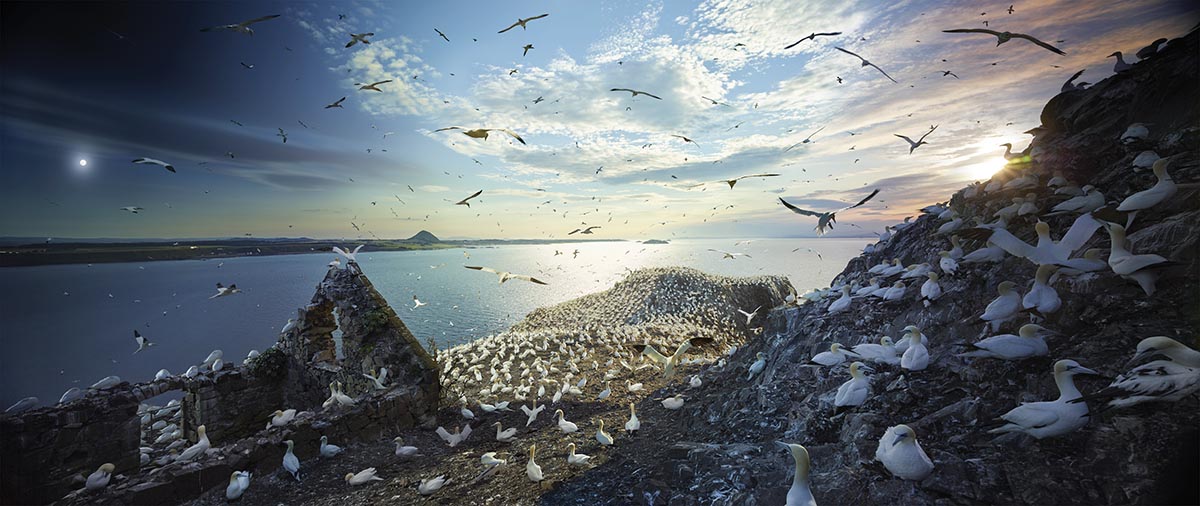
- While photographing the more than 150,000 northern gannets that roost on the uninhabited Bass Rock island in Scotland’s Firth of Forth, Wilkes withstood the birds dive bombing his head and pecking at his calves for 36 hours as he hardly moved (above). “And the guano,” remembers Wilkes. “Let’s just say it was everywhere, around and on me.”
- To produce one of his Day to Night images of President Joe Biden’s 2021 inauguration, Wilkes and an assistant climbed into a scissor lift at 5:30 a.m. on Jan. 20, 2021. “We were buffeted by 35-mile-per-hour winds and whipped by freezing rain, but we spent 15 hours suspended in that lift some 40 feet above the National Mall,” remembers Wilkes. “I loved it.”
- In British Columbia’s Bella Coola Valley, Wilkes was perched atop a 15-foot scaffold with his assistant for 36 hours—no breaks—to photograph the grizzly bears that frequented the nearby river (below). “We had walkie talkies and bear spray and had been given a crash course in safety by a local park ranger,” remembers Wilkes. “He warned us not to have any food with us, and if a bear approached us to show deference, to stay calm and project confidence.” Halfway through the shoot Wilkes and his assistant popped lozenges into their parched mouths. Within minutes, an enormous grizzly bear appeared. Six feet away from them, the bear stood up. The pair remained rock steady and tried to look submissive. “We both took our lozenges and chucked them into the river,” says Wilkes. “Thank God the bear went on his merry way.”
“Uncomfortable is good,” explains Wilkes. “It concentrates the mind.”
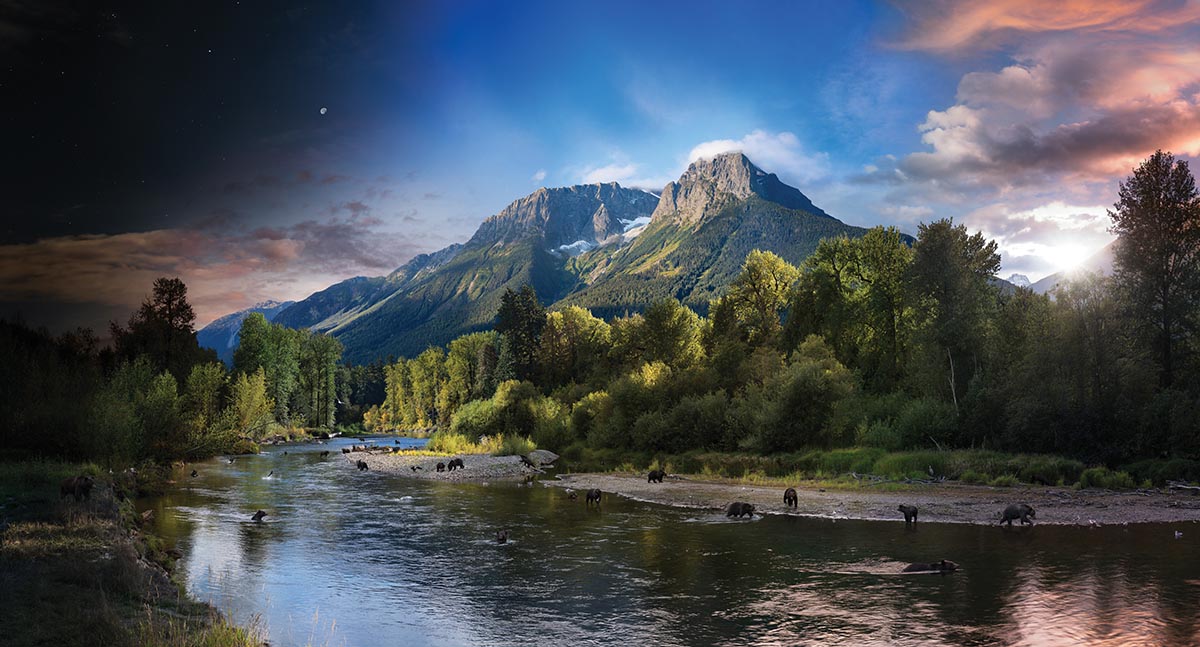
STREET PHOTOGRAPHY ON HIGH
“I am essentially a street photographer from 50 feet in the air,” says Wilkes from his Westport, Connecticut, home studio. In the Day to Night series, which he developed and began working on in 2009, he creates images of a full day in a single photograph.
To do this he looks for a bird’s-eye view—usually perching himself in a crane or cherry picker high above the ground—of a scene or event that appeals to him. “I do a lot of research to find a subject that is iconic or momentous—one that I hope will evoke a sense of wonder or awe in a viewer.”
On location he gets up in the air and takes images from a fixed vantage point, never moving his large-format Linhof 4x5 camera. Once he establishes perspective, he locks the camera in place. “I am a people watcher, and I have the greatest seat in the house to capture these fleeting moments of humanity and light in time,” he says. “There is nothing automated about what I do. I am continually scanning the scene, looking for scenes to capture. I like to say that I am the ultimate voyeur and a relentless collector of unique moments. I am putting a face on time.”
He typically stays in his aerie for 15 to 36 hours and, looking for those best moments while making 1,200 to 2,200 images from early morning through night. (During his 36-hour Bella Coola Valley visit, he made more than 4,000 images.) Then he returns to the studio, where he and his team pore over the captures and choose about 50, which they will then combine into a single image with the use of Adobe Photoshop. That image depicts the transition from morning to night. Editing and seamlessly blending the captures into a sweeping composite photograph takes a month or more.
Wilkes produces prints as large as 120 inches in length. “In my work I am trying to replicate the perception of how the human eye sees, and a really large print allows the people to walk into the scene,” he explains. “I hope seeing such a large print can become almost a visceral experience for the viewer.” Gallery owners often tell him people don’t spend only a few minutes looking at his pictures. “They tell me they stand for 10 or 15 minutes just looking and discovering,” he says.
“That thrills me,” he continues. “I am interested in rewarding viewers; the more they look, the closer they look, the more they see. I’ve often thought the best art is that which gives you something new every time you see it.”
Wilke’s innovative Day to Night concept was born from a 2009 assignment for New York Magazine to photograph the just-opened High Line park in Manhattan. “I couldn’t find a vantage point that satisfied me, so I came up with the idea of shooting it from north to south then from day to night, perched high above it in a cherry picker. They loved it, and I was off.”
He also credits a 1996 “Romeo and Juliet” collage (below) of 250 images he produced for a Life magazine assignment as a pre-Photoshop inspirational precursor to the series. “I ended up cutting out and gluing the 250 images from my shoot together into a collage and realized I was changing time in a photograph,” he remembers. “The idea stayed with me for the next 13 years until technology finally caught up with my concept.”
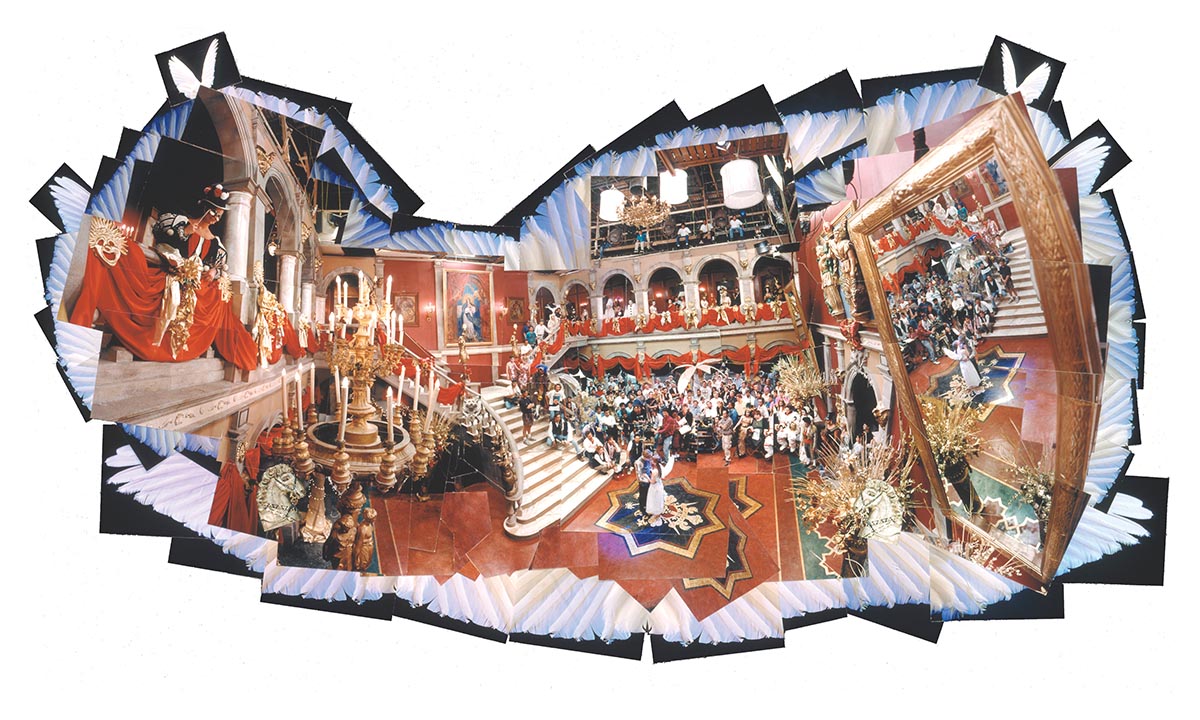
MENTEE AND MENTOR
Day to Night has taken Wilkes around the world as far afield as Tanzania’s Serengeti National Park, plus Moscow, Venice, Greenland, and more. His work is included in the George Eastman Museum, the Museum of the City of New York, the Jewish Museum of New York, and in many private collections. His editorial work has been published by magazines, including National Geographic, Vanity Fair, Time, Fortune, Sports Illustrated, and others. Collections of his personal work grace the pages of his books “Ellis Island: Ghosts of Freedom” and “Day to Night.” He’s also photographed advertising campaigns for companies such as Netflix, IBM, Nike, Sony, Verizon, and Rolex.
Wilkes continues to add to his Day to Night series. After photographing wildlife and endangered natural places around the world, he’s taken a special interest in using his work to promote conservation and highlight the perils of climate change. “The more time I have spent in such remote places, I have realized that we are living on such a fragile biosphere, and everything we do or change affects it in a dramatic way. For example, I have seen firsthand how wet climates are getting dry, warm climates are getting colder. My work is now purpose-driven. My mission as an artist now is to help tell these stories, to touch people’ s emotions about these issues.”
He also finds time for experimenting with more personal work. When travel was restricted during the COVID-19 pandemic, he produced a series of portraits of essential workers, such as firefighters, doctors, and rescue responders. Another series, “Tapestries,” includes abstract images of multiple exposures that, unlike his Day to Night series, are made in camera. He’s described these Impressionistic photographs as “layered captures of unique moments in time.”
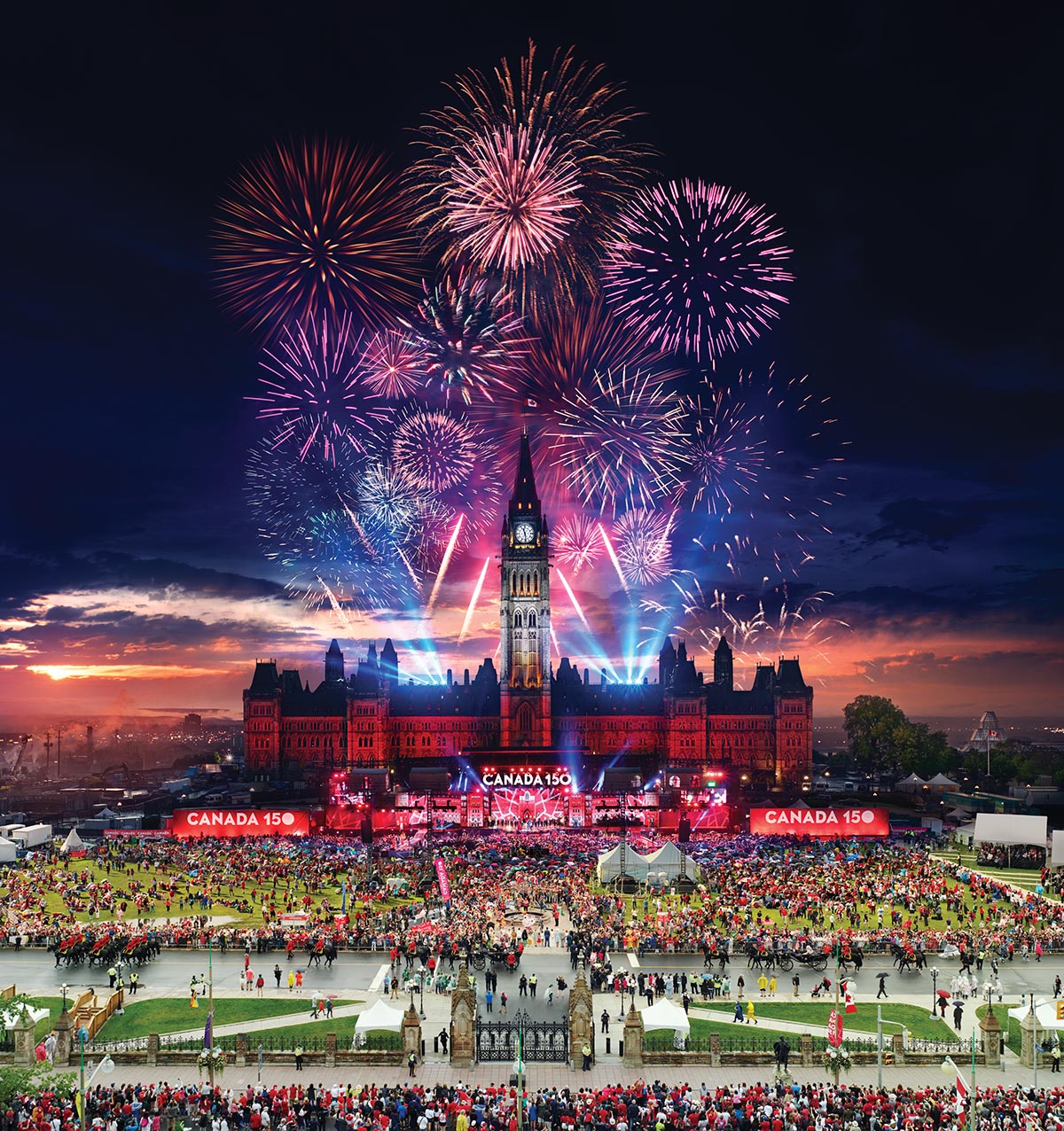
While Wilkes is an honored contemporary photographer, he is quick to pay tribute to the pros he says he was lucky enough to learn from. In 2018, he directed and his wife produced a 78-minute documentary tribute to one of his early mentors, the legendary New York City-based photographer Jay Maisel, titled “Jay, Myself.”
“Jay has given me the greatest of gifts over the last four decades—from accepting me as his assistant in 1979, then associate, and eventually friend,” Wilkes says. “He taught me so much about the art, craft, and business of photography. I was lucky to have been able to sit at the knee of the master.”
Recalling his early days as Maisel’s 20-year-old assistant, a job he landed shortly after earning his bachelor’s degree in photography from Syracuse University, Wilkes repeats his mentor’s advice, which he has shared with many aspiring young photographers, including his own children: “Talent is great, but if you are going to do this for a living, you have to outwork everyone.”
“That reminds me,” says Wilkes, who is now on a roll about teaching, mentoring, and giving advice. He remembers getting a letter from a 15-year-old who asked him, “I want to photograph a Day to Night for my mother’s birthday. Can you tell me how you do it?”
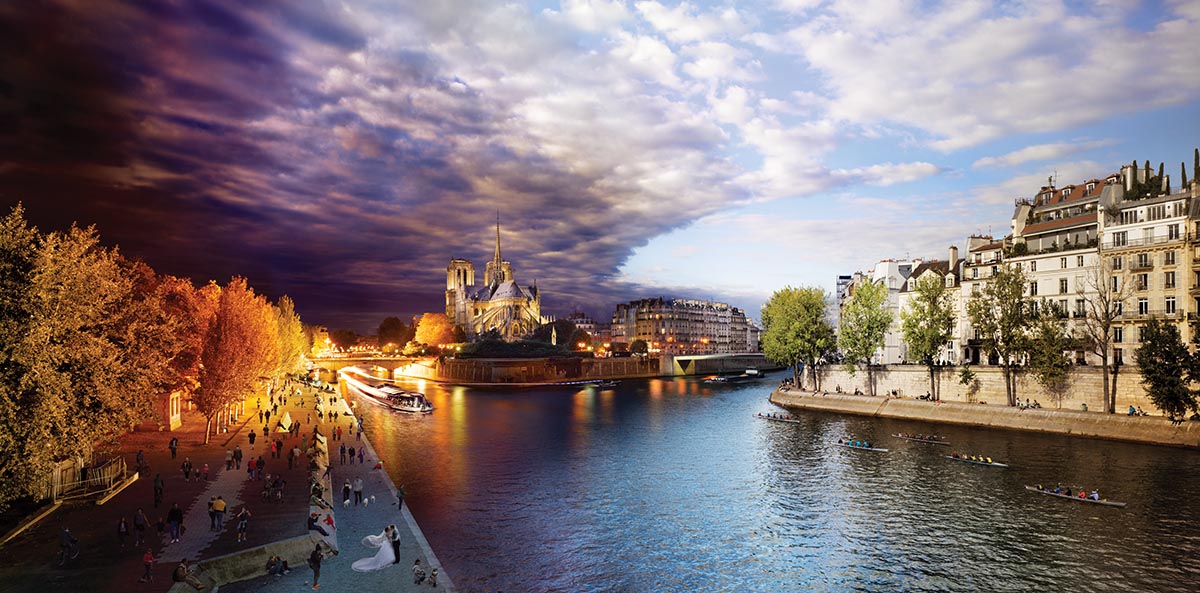
He laughs and recalls how touched he was by the letter. “I was that passionate about photography at his age. But I told him he needed to focus on the single image, to focus on making pictures and developing his own vision. I told him he must find his own passion—what he really loves photographing—and master that.”
“I was lucky enough to take a class at Parsons when I was only 16 from the great Life magazine photographer Bob Adelman,” says Wilkes. “I showed him my work and mentioned I hoped to go to the technical school, the Rochester Institute of Technology, to study photography. He took me aside and told me, ‘Let me tell you something. Do you want your photos to speak to people? Then get yourself a great liberal arts education.’
“Adelman paused, then added, ‘And while you’re at it, study business. Most photographers are lousy businesspeople.’”
“I took his advice and did a dual major in photography and business. Best advice I ever got.”
Robert Kiener is a writer in Vermont.

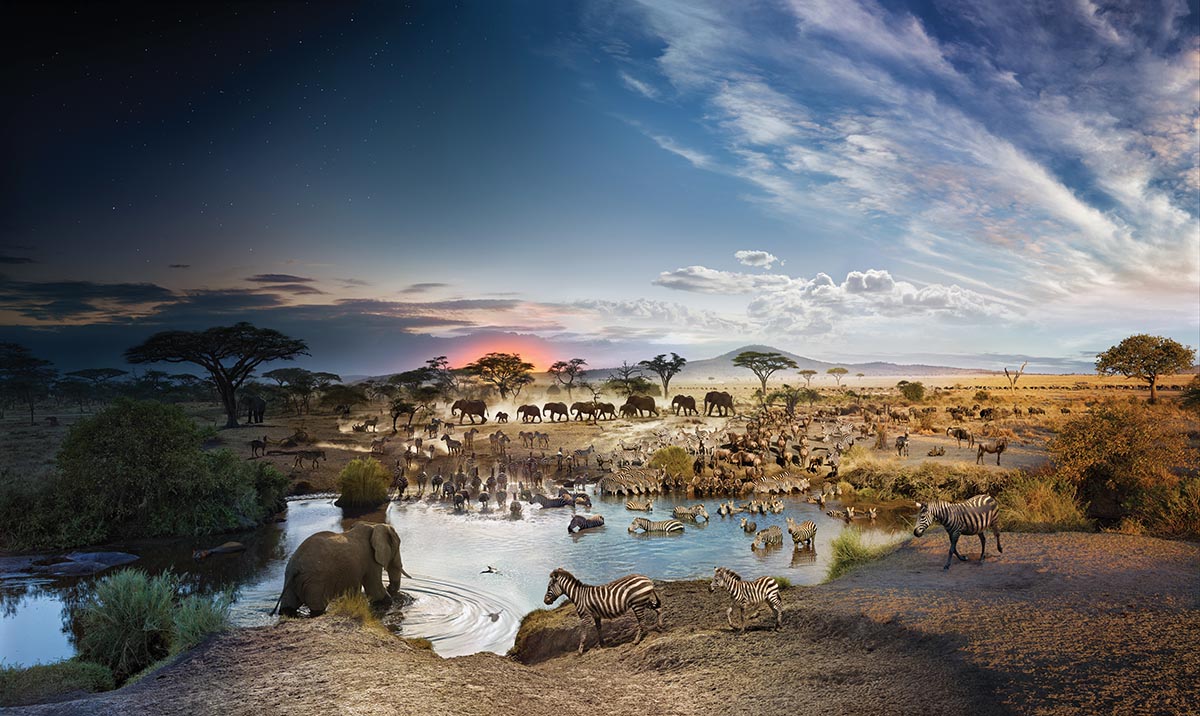
 View Gallery
View Gallery


